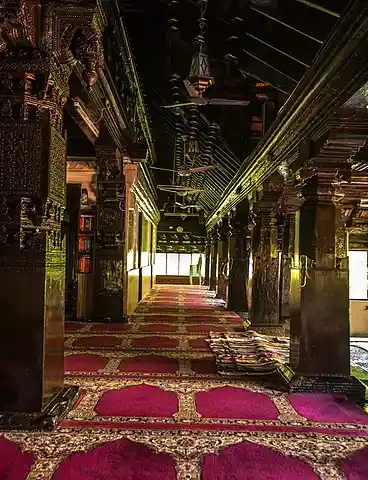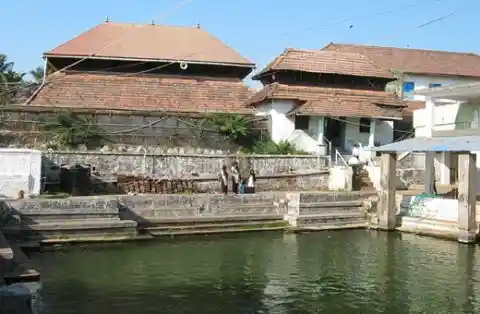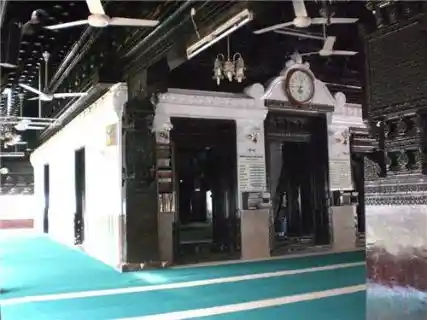Zeenath: Piety and Heritage in Wood
When Muslims first arrived on the Indian coast 1400 years ago, the land embraced them with the same grace bestowed on the Aryans, Africans, Zoroastrians, Tibetians, and others. These arrivals have uniquely imprinted their gems on our nation's social, cultural, and architectural heritage. One such gem is the Zeenath Baksh Masjid built in wood.

The exquisite and ornate wooden sanctum of Zeenath Baksh Masjid | Source: Wikimedia
History has proven time and again that old is gold, both figuratively for its preciousness and literally for the permanence of the shelf life of gold counted over centuries. But if something that is the oldest, counted over centuries, is in wood, wouldn’t it be more precious and rare? When wood that decays and crumbles away naturally survives the burn of time and political upheavals, then it becomes the golden grace of heritage. The Zeenath Baksh Masjid in Mangalore, Karnataka, is one such gem of Indian historical treasures. It has survived for centuries and is not just the only Masjid made of wood but also the oldest in Karnataka and the third oldest in India.
In the seventh century, Hazarath Mohammed Malik Bin Deenar and his small group arrived at the Malabar coast of Kodungallur, with a letter written by the former Cheruman Perumal, who passed away while returning from Mecca. The letter instructed his son, the contemporary raja (king), to provide every kind of hospitality and permission to preach the faith of Islam in the kingdom. After observing the pious and honest nature of the guests, the king granted lands and other amenities within his kingdom. Malik Deenar, the first-generation disciple of Prophet Mohammed, with his group, established ten masjids after the first in Kodungallur. Zeenath Baksh is the second out of the ten and was constructed in 643 AD, currently located in the Bunder area of Mangalore city. It was earlier referred to as Beliye Palli or Malik Dinar Valya Juma-ath Masjidand was built by the kith and kin of Malik Deenar, who continued preaching the tenets after the sahaba (companion) departed from our coast.

The carved wooden pillars attest that old can be golden in wood | Source: Wikimedia
The nayaab nature of the original structure is that, all those centuries ago, it was entirely made of wood. The pristine glory of the wooden sanctum is still maintained by the local people and sponsors. Owing to the historical nature of the religious site, the caretakers of the masjid hope to get the site its due recognition and funding for maintenance from the administration. As the Secretary of the Central Muslim Committee, Mr Hanif Ali, informs,
“We have written to the tourism department and the Wakf Board to develop the mosque into a tourist spot. They have shown interest, but nothing concrete is being done.”
Though the original structure, which now acts like the inner sanctum, is enclosed within stone walls after renovation, the ceiling of this part is also made of wood and protected with a brass sheet.
As Mr Ali states, “Even if the stone walls were removed, the structure would still stand.”

The water tank is ubiquitous to all religious sites in the region | Source: Wikimedia
The present structure holds the legacy of the Tiger of Mysore, Tipu Sultan, who renovated the medieval Masjid during the second half of the 18th century. Though he enhanced the serenity and aesthetics of the heritage, the original model was kept intact. He then renamed the structure after his daughter Zeenath Baksh, and for the past 400 years, it has retained the name. In the 19th century, it was given a new look by adding four minarets while earlier with its tiled roof it used to resemble the Malabar-styled mansion of a local chieftain.

The new look of the Masjid with the outer walls enclosing the original | Source: Deccan Herald
The sanctum is designed with typical Indian architectural blends with the tank within its grounds, keeping in sync with the traditional style of the nearby temples. The carvings on the sixteen pillars that form the perimeter of the prayer hall depict flowers, bells, and Arabic texts narrating anecdotes from the life of the Prophet. The art etched into the wood encapsulates the cultural blends of the region, and each pillar is made of a single block of wood. Despite the rain and humid conditions typical of the belt, the intricacy of the wooden designs has not faded into blurred lines, as usually expected. Even the floor, walls, and doors are adorned with teak wood and rosewood. As the manager of the Masjid shares,
“Every couple of years, we spend more than Rs. 1 lakh to rub in oil to preserve it. Apart from fixing small scratches, we have not modified or replaced any part of the structure.”

Where wooden art is revered in prayers | Source: Mangalore online
Records prove that this house for prayers was established in the Islamic month on the twenty-second day of Jumada al-awwal and approximately on 18 April 643 AD, with Moosa Bin Malik, the son of Malik Bin Abdullah, as the first Qazi (magistrate of the shari'a court). The site is not known just for its worthy heritage, but also for its community activities, which keep the people around bonded in gratitude and harmony. Attesting to the shared communal brotherhood is the Sharavu Ganapathi Temple. Contrary to propagated accusations, the well-known historian, A M Prabhu (who wrote a well-researched history of Tipu Sultan), recorded that the temple was developed by the Sultan, as a tribute to the local Tuluvas, who for centuries, protected the mediaeval Arabs and the Muslims.

The Shrine overlooking the Malabar-style verandah | Source: Mangalore Online
The Masjid is a hub of charitable activities with its sponsored yateemkhana (orphanage), funding the destitute during marriage ceremonies and even conducting funerals free of cost for the ones who cannot afford it. The wide verandah for the past eighty-seven years has also cradled the sacred shrine of the revered Qazi Hazrath Sheikuna Muhammed Moula Jalal Masthan Al Bhukhari.
All in all, the Zeenath Baksh Masjid is one of the gems that adorn our heritage of cultural blends and is a cocoon of brotherhood, serene piety, and harmony in diversity. A site that is the zenith of the glorious South Indian history.


